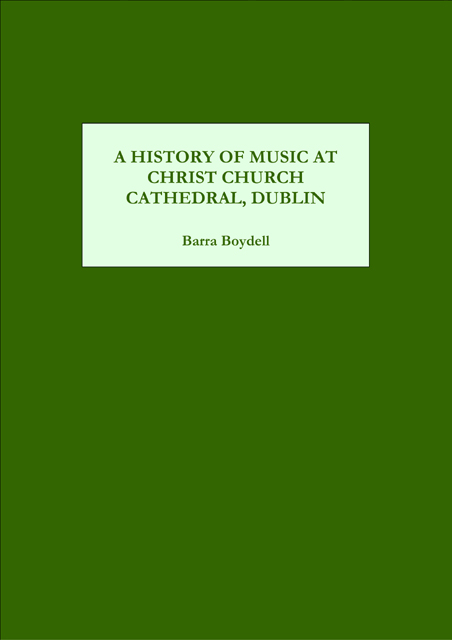Book contents
- Frontmatter
- Contents
- Plates and Musical Examples
- Foreword
- Preface
- Editorial Conventions
- Introduction
- One ‘Dulces Fecit Modos’: The Medieval Cathedral-Priory
- Two ‘For the More Honour of God’s Divine Service’: The Reformation and Early Seventeenth Century
- Three “So Great and Solemn Service’: The Restoration and Later Seventeenth Century
- Four ‘The Increasing Excellence of the Choir’: The Eighteenth and Early Nineteenth Centuries
- Five ‘A More Efficient Performance of the Duties of the Choir’: The Mid-Nineteenth Century
- Six Decline and Revival: Disestablishment and the Twentieth Century
- Appendix One Succession Lists of Organists and Assistant Organists
- Appendix Two Succession List of Masters of the Boys/Music Masters/Choir Masters
- Abbreviations and Bibliography
- Index
Six - Decline and Revival: Disestablishment and the Twentieth Century
Published online by Cambridge University Press: 21 March 2023
- Frontmatter
- Contents
- Plates and Musical Examples
- Foreword
- Preface
- Editorial Conventions
- Introduction
- One ‘Dulces Fecit Modos’: The Medieval Cathedral-Priory
- Two ‘For the More Honour of God’s Divine Service’: The Reformation and Early Seventeenth Century
- Three “So Great and Solemn Service’: The Restoration and Later Seventeenth Century
- Four ‘The Increasing Excellence of the Choir’: The Eighteenth and Early Nineteenth Centuries
- Five ‘A More Efficient Performance of the Duties of the Choir’: The Mid-Nineteenth Century
- Six Decline and Revival: Disestablishment and the Twentieth Century
- Appendix One Succession Lists of Organists and Assistant Organists
- Appendix Two Succession List of Masters of the Boys/Music Masters/Choir Masters
- Abbreviations and Bibliography
- Index
Summary
The century after the disestablishment of the Church of Ireland in 1871 would witness social and political changes arguably more challenging than any that had previously affected Christ Church, changes which would alter the relationships between the cathedral, the city of Dublin and the country as a whole and which would at times call into question the very survival of the cathedral, not to mention the continuation of its musical traditions. The Land Acts of the late nineteenth century, the establishment of democratically elected county councils in 1898 and the vigorous growth of Ireland as a Catholic nation had contributed to the reduction in the wealth and influence of the Protestant landed gentry whom Grindle characterised as ‘those pillars of the Church of Ireland’. This process came to a head during the period of ‘the Troubles’ immediately preceding independence when the houses of many Protestant landowners were burnt down, their owners often moving to England or Northern Ireland. After 1922 when (with the exception of the six counties of Northern Ireland in which Protestants constituted a majority of the population) Ireland gained its independence from British rule, the Church of Ireland represented no more than 5 per cent of the population of a new, independent nation whose religious ethos was overtly, even triumphantly Catholic. Christ Church cathedral, which had maintained its tradition of loyalty to the British crown during the decades leading up to independence, holding memorial services for Queen Victoria in 1901 and presenting an address of welcome to the king and queen on their visit to Ireland in 1903, now found itself very much an outsider within its own city and state. With diminishing congregations and finances but inheriting the country’s historic church buildings, the Church of Ireland struggled to maintain both its buildings and its traditions. In this climate it is little wonder that Christ Church cathedral entered one of the darkest periods of its existence, an inward-looking period during which its musical tradition largely stagnated, reaching a nadir with the closure of the choir school in 1972 after nearly five hundred years of existence. But by then change was already in the air.
- Type
- Chapter
- Information
- A History of Music at Christ Church Cathedral, Dublin , pp. 172 - 188Publisher: Boydell & BrewerPrint publication year: 2004



